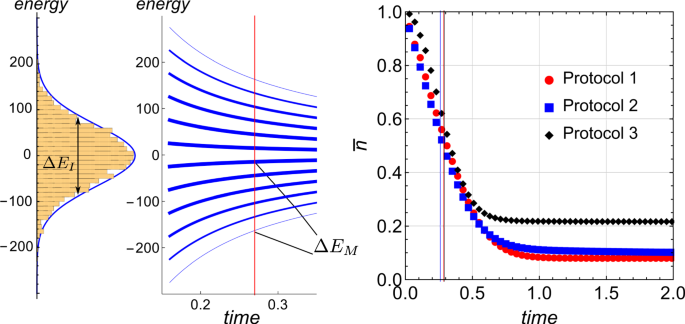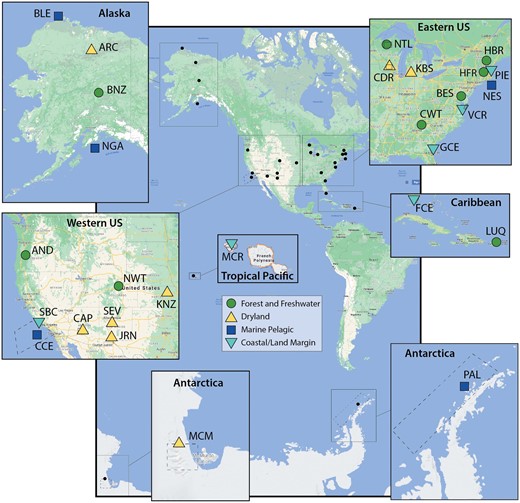大量のX線データを活用する機械学習手法により、材料探索のスピードアップを図る。 Machine learning method for harnessing large volumes of X-ray data will speed materials discovery.
2022-08-15 アルゴンヌ国立研究所(ANL)
X線回折(XRD)は、技術的に重要な数多くの物質の3次元原子構造に関する重要な情報を提供してきた。
ここ数十年、アルゴンヌにあるDOE Office of Scienceのユーザー施設であるAdvanced Photon Source(APS)などの大規模施設では、XRD実験で得られるデータ量が劇的に増加した。しかし、これらの膨大なデータセットに対応できる解析手法はほとんどありませんでした。
研究チームは、この新しい手法をX線温度クラスタリング(XTEC)と呼んでいる。大規模なX線データを高速にクラスタリングし、色分けすることで、温度の上昇や低下によって起こるこれまで知られていなかった構造変化を明らかにし、材料の発見を加速させます。
<関連情報>
- https://www.anl.gov/article/uncovering-natures-patterns-at-the-atomic-scale-in-living-color
- https://www.pnas.org/doi/full/10.1073/pnas.2109665119
現代のX線回折のビッグデータに対応する解釈可能で教師なし機械学習の活用 Harnessing interpretable and unsupervised machine learning to address big data from modern X-ray diffraction
Jordan Venderley, Krishnanand Mallayya , Michael Matty, +13, Matthew Krogstad, Jacob Ruff, Geoff Pleiss, Varsha Kishore, David Mandrus, Daniel Phelan, Lekhanath Poudel, Andrew Gordon Wilson, Kilian Weinberger, Puspa Upreti, Michael Norman, Stephan Rosenkranz, Raymond Osborn, and Eun-Ah Kim
Proceedings of the National Academy of Sciences Published:June 9, 2022
DOI:https://doi.org/10.1073/pnas.2109665119

Significance
Recent instrumental advances now enable large volumes of X-ray diffraction to be collected with high efficiency at synchrotron sources. This article shows that machine learning can produce an unbiased and comprehensive analysis of such data that uniquely combines both long-range and short-range structural correlations as a function of temperature. In Cd2Re2O7, machine learning characterizes both the critical behavior of the primary order parameter and the Goldstone mode fluctuations that drive symmetry breaking at a lower temperature. The approach results from a synergy between computer scientists and physicists, producing a machine learning strategy that is interpretable within the established framework of physics and adaptable to other “big data” problems in materials science and engineering.
Abstract
The information content of crystalline materials becomes astronomical when collective electronic behavior and their fluctuations are taken into account. In the past decade, improvements in source brightness and detector technology at modern X-ray facilities have allowed a dramatically increased fraction of this information to be captured. Now, the primary challenge is to understand and discover scientific principles from big datasets when a comprehensive analysis is beyond human reach. We report the development of an unsupervised machine learning approach, X-ray diffraction (XRD) temperature clustering (X-TEC), that can automatically extract charge density wave order parameters and detect intraunit cell ordering and its fluctuations from a series of high-volume X-ray diffraction measurements taken at multiple temperatures. We benchmark X-TEC with diffraction data on a quasi-skutterudite family of materials, (1−x)3Rh4Sn13, where a quantum critical point is observed as a function of Ca concentration. We apply X-TEC to XRD data on the pyrochlore metal, Cd2Re2O7, to investigate its two much-debated structural phase transitions and uncover the Goldstone mode accompanying them. We demonstrate how unprecedented atomic-scale knowledge can be gained when human researchers connect the X-TEC results to physical principles. Specifically, we extract from the X-TEC–revealed selection rules that the Cd and Re displacements are approximately equal in amplitude but out of phase. This discovery reveals a previously unknown involvement of 5d2 Re, supporting the idea of an electronic origin to the structural order. Our approach can radically transform XRD experiments by allowing in operando data analysis and enabling researchers to refine experiments by discovering interesting regions of phase space on the fly.



